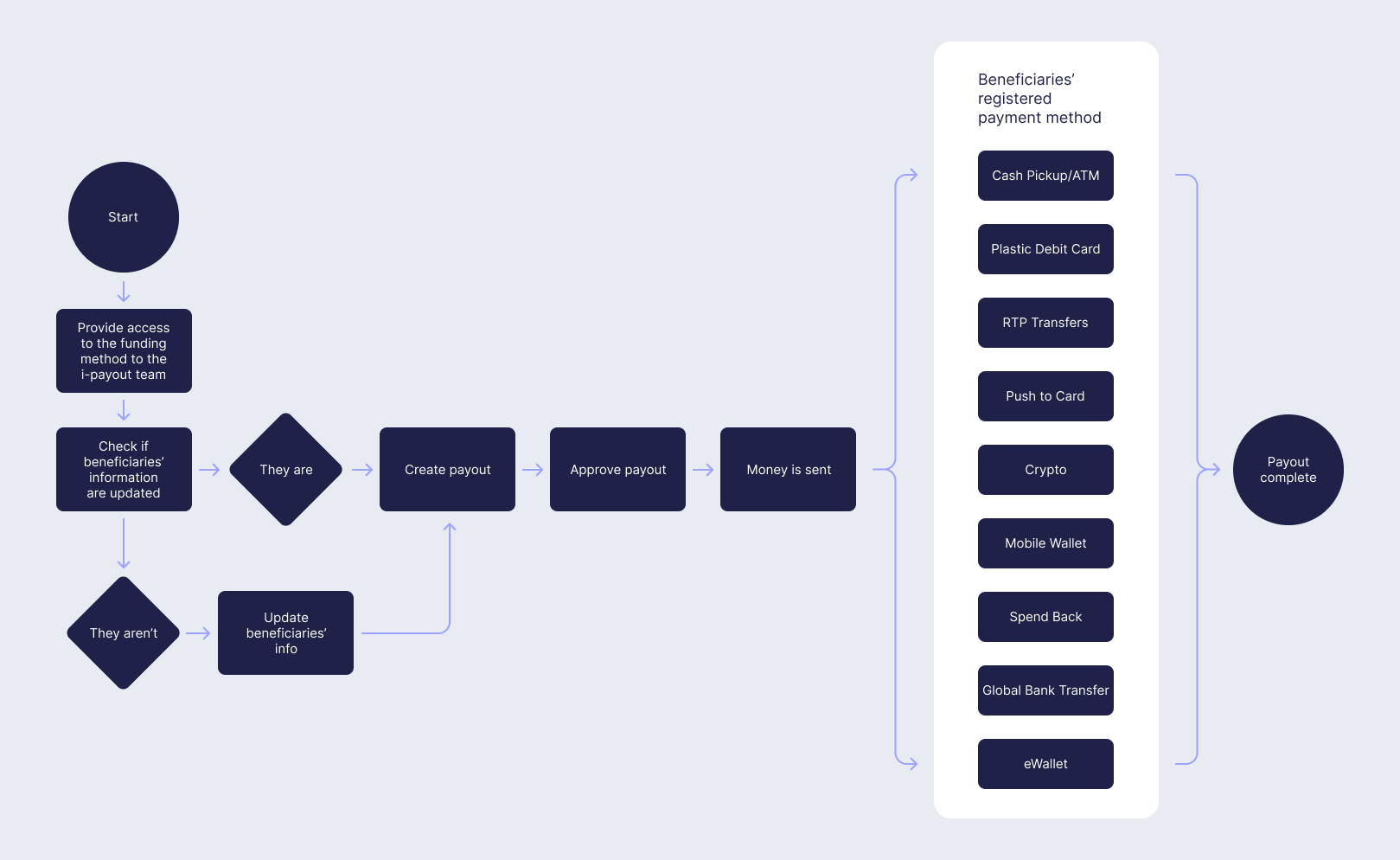Payout Lifecycle
Understanding the lifecycle of a payout is crucial for ensuring smooth and efficient financial transactions. This guide walks you through how payouts are managed and executed, providing clarity on each phase from initiation to completion. The following diagram illustrates the workflow of a payout, detailing each critical step along the way.

Step-by-Step Breakdown
1. Provide Access to the Funding Method to the i-payout Team
The first step in the payout lifecycle is making sure that your funding method is connected to i-payout's systems. This connection ensures sufficient funds are available to complete the payouts to your beneficiaries.
2. Check if the Beneficiaries' Information is Updated
Before proceeding with the payout, verifying that all beneficiaries' information is up-to-date is essential. Accurate beneficiary details are crucial for the successful transfer of funds.
- If Beneficiaries' Information is Updated: If all information is accurate and current, you can create the payout.
- If Beneficiaries' Information is Not Updated: If there are discrepancies or outdated information, update the beneficiaries' details before moving forward.
3. Create Payout
Once the beneficiaries' information is verified, you can create the payout. This involves specifying the amount and the beneficiaries who will receive the funds.
4. Approve Payout
After creating the payout, it needs to be approved. This step is typically an internal process to ensure all details are correct and authorize funds' release. However, if you use the Batch file integration to submit the payouts, you will have to authorize them manually.
5. Money is Sent
With the payout approved, the money is sent to the beneficiaries. The funds are transferred according to the registered payment method specified by each beneficiary.
6. Beneficiaries' Registered Payout Method
The beneficiaries receive their funds through the payout method they have registered. The available payment methods include:
- eWallet
- Global Bank Transfer
- RTP Transfers
- Cash Pickup/ATM
- Plastic Debit Card
- Push to Card
- Crypto
- Mobile Wallet
7. Payout Complete
The payout process is complete once the funds have been successfully transferred to the beneficiaries' accounts through their chosen payment method.
Benefits of Using Payouts
Using an organized payout system offers several benefits:
- Efficiency: Streamlined processes reduce the time and effort required to manage multiple transactions.
- Accuracy: Regular updates and verification steps ensure that funds are sent to the correct recipients.
- Flexibility: Multiple payment methods provide beneficiaries with convenient options to receive their funds.
- Security: Secure processes and approvals protect against unauthorized transactions and errors.
- Transparency: Clear steps and verification processes increase trust and reliability in financial transactions.
By following this lifecycle, businesses can manage their payouts efficiently, ensuring timely and accurate distribution of funds to beneficiaries.
Updated 2 months ago